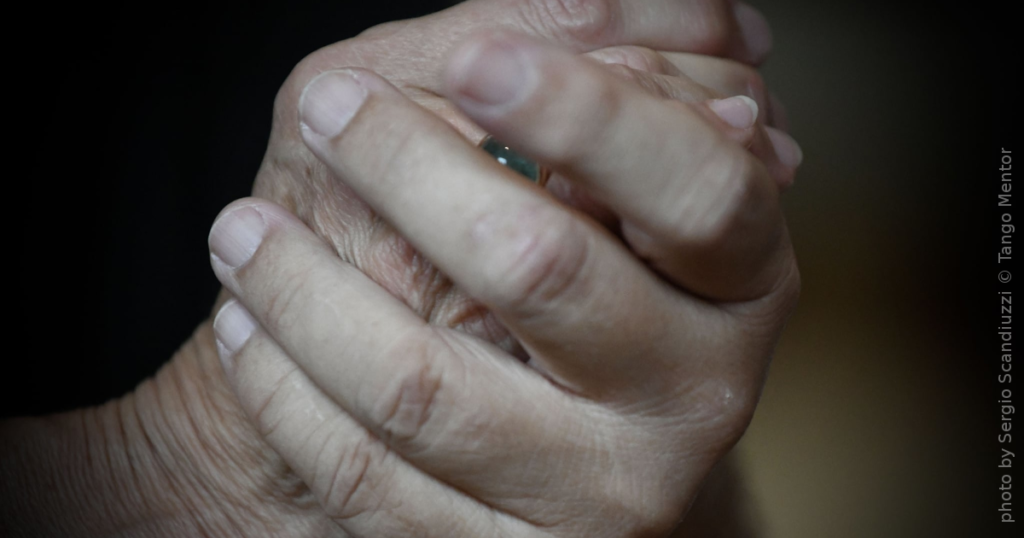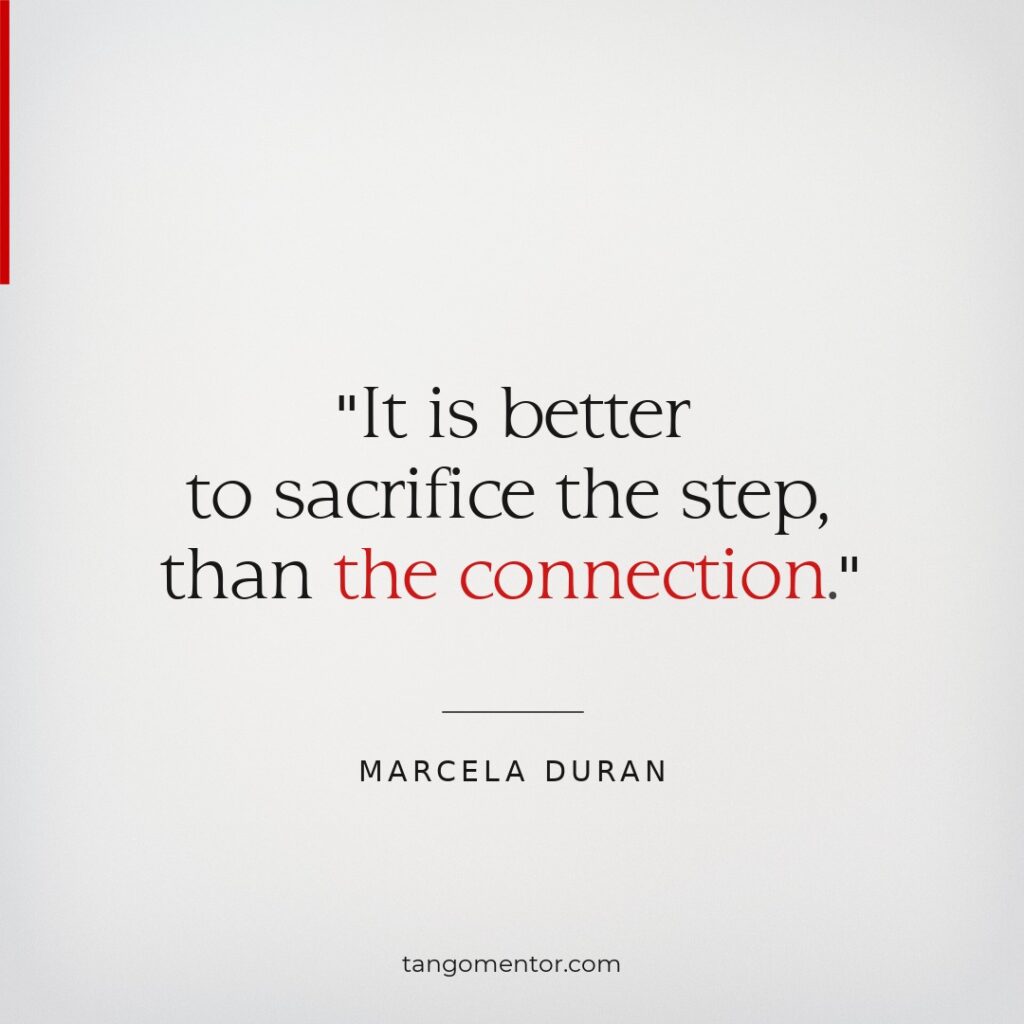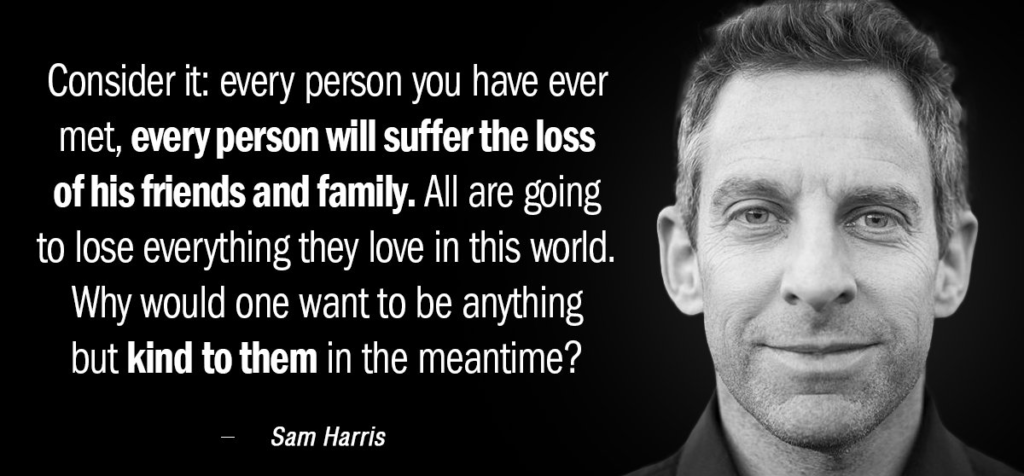
We have decoupled society from nature. We have decoupled sex from intimacy. We have decoupled thinking from feeling. We have even decoupled tango from human nature. I don’t have to be an expert psychologist or sociologist to recognize that this cannot happen without causing damage and alienation, without creating defects, and without losing something essential.
The dehumanizing direction we are all headed in as a society reflects how tango is danced as well. I’m not saying there’s a single right way or an ultimate prototype of what tango should be. I’m simply suggesting that when I view tango in a broader context, it appears to me that it has the potential to be much more. If we were not living in an environment that inflicts scars on our souls every day.
If you don’t see it or feel it, then “Merry Christmas to you!” 🙂
But I do feel it. I see that tango is becoming dehumanized, castrated, sanitized… and this results in a lack of fulfillment and happiness in dancers who seek a deeper meaning and humanity.
Don’t dance to impress
On the other hand, this state of thing is a breeding ground for exhibitionists and people with large egos. They are often viewed as the primary movers and leaders within the tango communities. I mean those who dance to show their skills rather than searching for genuine connections, those who “fish for attention” and dance for the spectators.
But there’s another aspect that bothers me: newcomers often have their perceptions of tango influenced by this behavior.
I believe that individuals with a little sensitivity are often discouraged from the start. Meanwhile, potential exhibitionists are encouraged by this environment and are drawn into it. As a result there is an increasing number of exhibitionists within the community.
Unfortunately we live in a tango world where flashy skills are often valued more than deep connections. We frequently see dancers who choose their partners not because they are interesting personalities to connect with, but because they are “good dancers” who will support them to showcase their abilities.
The partner is not a true partner anymore; instead, the partner becomes just a tool, an object utilized to enhance their dancing skills. The partner becomes an extension of their ego.
This is one of the reasons I believe that connection in tango should never be viewed just as a tool for executing steps, but rather as the ultimate goal of the dance itself. The steps are just tests for the authenticity and depth of the connection.

Selling off
I admit, commercialization can sometimes contribute to development, but we must always be aware that when money is involved, something is lost. I think this applies to everything, from sports to arts and entertainment, and certainly to tango as well. How so?
When different teachers advertise their skills by performing on stage, or even in some distasteful cases, on the dance floor – newcomers believe that’s the direction their tango development should take. They might think that doing fancy steps should be part of their repertoire, so they can also impress others one day.
I’m strongly against this!!! It’s a failure of the tango industry to neglect the part of tango revolving around the emotion and the connection. As a result, I see that tango has become a soulless caricature of itself… a sport…. a competition…
Of course, teachers and tango professionals have to make a living from tango, but I don’t believe that promoting this cheap acrobatic version is the solution. Firstly, the target group for that version of tango tends to be individuals with exhibitionistic and self-centered tendencies.

On the other hand, I believe society, the people living in this world, need a more subtle version of tango – one that values human kindness, understanding, connection, and emotion.
We deal with enough egoists and self-centered people in our everyday lives – tango can be (and often is) a refuge where we can embrace vulnerability. Competitiveness and exhibitionism can’t help there!
I get it, cultivating this subtle side of tango takes time, dedication, and love for the people we teach – something which is expensive, even priceless. But, that doesn’t fit well with the financial side of the enterprise. The commercialized version of tango most of the time overlooks it, giving newcomers only the form, the steps, the technique, and occasionally, the musicality.
The context is often left for the students to discover themselves, and about the content (emotion, connection), I have an impression that it’s often not even mentioned. Sometimes, it’s even discouraged, with statements like “you can’t teach an emotion,” and in some communities, it’s even taboo to talk about passion and emotions.
How to Cultivate Emotion?
When I talk about teaching complicated steps, a video of Carlos Gavito comes to mind, where he emphasizes that it’s a failure of the teachers if they don’t point out to their students that it’s not all about the steps, and you can dance perfectly fine by just doing salidas.
He suggests that students record a video of themselves dancing with those fancy moves to see how bad it looks, and then they will understand the importance of dancing simply.
“But how do you teach connection and emotion? Isn’t simple dancing boring?” you might ask.
Dancing without complicated steps can be boring only if there’s nothing else to enjoy but the steps and skills themselves. Connection opens a whole world of discovering the other person and channeling your own emotions to them as well.
You don’t dance with the music, nor for the ronda – you dance with a person. A human being is in front of you in your embrace – and that’s most important. No elegance, no musicality, no other thing should come before that.
I don’t know about you, but I find tango performances somewhat ugly. I often sense a lot of fakery, acting, choreographed parts, and a focus on showcasing abilities; many times I see a lack of authentic emotion and spontaneous behavior – to me, it feels like a soulless try to sell tickets and advertise workshops. Please don’t confuse them with social tango, because when you do, it leads to dehumanization.
Your contributions are vital for maintaining the quality and frequency of content on my blog. I appreciate every donation, big or small, as much as you feel you gained value from this article.
From my heart to yours!
Ivica
Securely processed by PayPal
I often say that there’s something wrong with tango, but I’m wrong: tango itself is fine; the problem is with the world we live in – tango just reflects that reality.
People dance the way they are, and a big part of who they are is shaped by the society in which they live. I don’t believe it’s easy to change the world or to change tango, but I am convinced that both you and I can begin by reconsidering how we approach our dancing.
The next time you step onto the dance floor, remember that you’re dancing with a human being; not merely with another dancer, not with the music, and not for the onlookers.

There’s a person there in your embrace, containing an entire universe within them – their fears, their dreams, their insecurities…
Embrace them as if it were your last hug, for who knows, it might indeed be the last.
Give without reservation, and don’t hesitate to receive when it’s offered to you. Because tango is more than just a dance; if we believe this, I know tango has the potential to change the world.

In a recent discussion I had in facebook a friend commented on her experience in an event using the phrase “humans didn’t count, only levels”
Sadly there is indeed this part of dehumanized tango… but fortunately I also believe there is also a part of human tango. It’s all up to us to decide where to go.
The problem as you say is that the dehumanized tango attracts more attention… and this maybe affects our perception. Because (call me an optimist) but I don’t believe this is the majority. What is louder isn’t always more… it just looks this way.
True indeed Christos! I’m optimist as well!